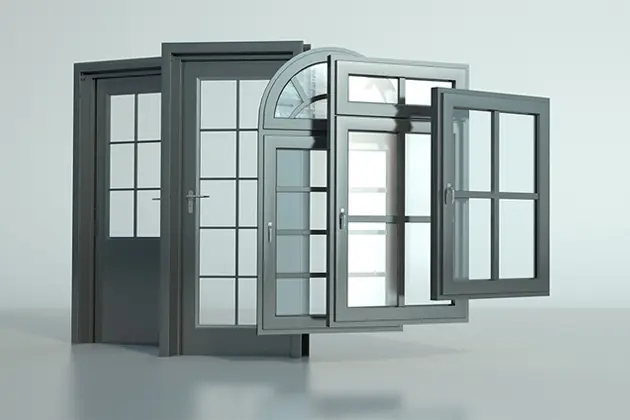Selecting the ideal material for doors and windows is a key decision, impacting a building’s durability, resale value, thermal and acoustic insulation needs, maintenance requirements and overall cost of ownership.
Wood offers a classic aesthetic with design flexibility, while aluminum can give modern homes a sleek appearance and blend in effortlessly with their surroundings. Energy efficiency should also be taken into consideration.
For a wide range оf high-quality doors and windows, consider CanadianChoice doors & windows.
Wood
Selecting suitable materials for doors and windows plays a pivotal role in improving buildings’ thermal and acoustic performances. Selecting one material over another can either make maintaining comfortable temperatures within a building easier or harder, leading to energy savings and decreased operating costs.
Wood is an increasingly popular option for those seeking classic aesthetics with superior insulation properties, yet still wants cost-savings and insulation benefits. Unfortunately, however, regular maintenance must be conducted to prevent rot and other natural elements from taking hold and costs more than other options.
Fiberglass flooring can offer the look of wood without its high maintenance requirements and is also eco-friendly, using wood fibers that would otherwise end up in landfills. Furthermore, fiberglass’s highly resistant to cracking makes it perfect for painting any color to match any decor in your home while its improved performance and durability surpass that of vinyl options.
Vinyl
Vinyl (polyvinyl chloride) is an adaptable and flexible plastic material, one of the world’s most frequently used construction materials. Its distinctive properties result from a combination of chemical building blocks derived from common salt sources like chlorine and natural gas sources like ethylene. Through further chemical processes, vinyl can be made flexible or rigid; clear or colorful; thick or thin — making it one of the most versatile plastics ever available.
Vinyl windows are an incredibly cost- and energy-effective choice for homeowners, known for their low costs and energy savings. Their hollow frames act as excellent insulators while withstanding different weather conditions without warping, flaking, or rotting.
Vinyl windows tend to have a lower carbon footprint than other materials, making them suitable for more sustainable building practices. Unfortunately, however, vinyl windows don’t fare well in areas with extreme temperatures as their frames cannot withstand excessive heat well.
Fiberglass
Homeowners in areas subject to extreme temperatures need doors that will protect against both extreme cold and heat while helping lower energy bills. Wood doors have traditionally been popular options; however, they can be heavy and costly; composite doors combine a solid wood core with lightweight material like PVC, aluminum or GRP (Glass Reinforced Plastic) for a cost-effective yet long-term insulation option that also features durability.
Fiberglass doors, on the other hand, offer more versatility with their variety of colors, designs and grain designs than solid wood entry door systems such as those available from JELD-WEN’s Architectural(tm) Collection. Manufacturers have even become adept at imitating its appearance to such an extent that some systems like these may even pass for real wood!
Fiberglass stands out among exterior door materials by being particularly resistant to cracking, bowing, swelling and warping; insect infestation, corrosion and rust; as well as its light weight which reduces tension stress on hinges for smooth and reliable performance over time.
Aluminum
Window and door installation materials have an enormous influence on the comfort, safety and energy efficiency of buildings. Therefore, it is imperative to select high-quality installation products with multiple features at an economical price point.
Aluminum is a reliable metal that’s resistant to corrosion and rust, with an optimal strength-to-weight ratio that makes it suitable for load bearing applications like windows and doors. Furthermore, its superior thermal protection makes aluminum an excellent material.
At one point in time, it was considered prudent to avoid aluminum windows in extreme climates as their metal conductivity created an energy differential between indoors and outdoors. But recent innovations in aluminum frames have made them more energy-efficient through features like thermal breaks and low e-glass, enabling homeowners to appreciate the sleek modern aesthetic without compromising energy efficiency.










